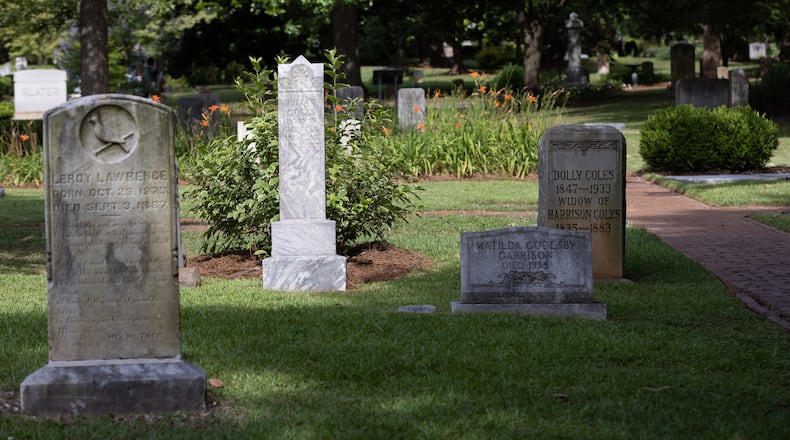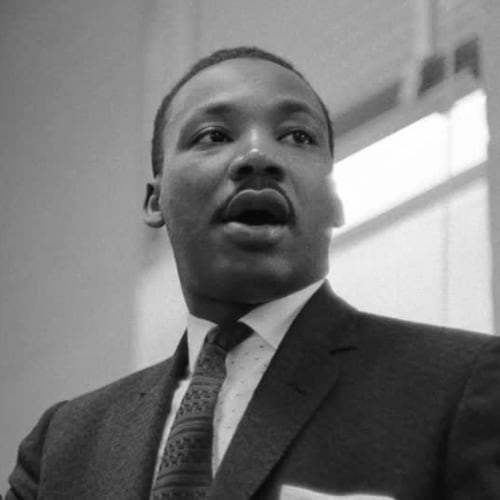Editor’s Note: This story is one in a series of Black History Month stories that explores the role of resistance to oppression in the Black community.
Every fall, Atlanta’s historic Oakland Cemetery hosts thousands of patrons for its popular series of Capturing the Spirit Halloween tours. The tour visits the gravesites of several interesting “residents” as actors dressed in costume share the life stories of their characters.
Tour participants get an entertaining slice of Atlanta’s history presented by the city’s historically significant business leaders, political powerbrokers and cultural luminaries, nearly all of them white.
Despite Oakland’s African American Burial Grounds being the final resting place for about 12,000 Black Atlantans, the addition of Black characters to the tour was once considered impossible thanks to the lack of reliable records. But in recent years, portions of the hidden Black history of Oakland cemetery have been actively rediscovered by an industrious local historian, D. L. Henderson.
Already the author of a book on South-View Cemetery, where Hank Aaron is buried, Henderson is writing a new book on Oakland Cemetery’s Black residents. In 2019, she began compiling individual histories for hundreds of the Black people buried there, significantly building on what was previously known.
Credit: Dr. D.L. Henderson
Credit: Dr. D.L. Henderson
“There wasn’t a lot of history written about African Americans really anywhere, unless they were very well-known or considered significant,” Henderson told The Atlanta Journal-Constitution. “So it takes a bit to find people who were not as well-known and put together the pieces of her lives.”
Several years and many hours of painstaking research later, Black characters are a mainstay on the Capturing the Spirit tours. By 2022, Henderson’s work yielded enough fruit for Oakland to produce a tour featuring a majority of Black residents.
Credit: Dr. D.L. Henderson
Credit: Dr. D.L. Henderson
Some of those were well-documented, inspirational figures like Bishop John Wesley Gaines, who founded Morris Brown College in 1881, or Jessie Murphy Wartman, the long-time supervisor of music for Atlanta Public Schools who was the Rev. Martin Luther King Jr.’s childhood piano teacher.
Others are more obscure, like Leah Wright Day, a washerwoman who was instrumental in one of the first interracial labor movements in the country. She helped organize a successful strike for better pay and working conditions for both Black and white washerwomen in the late 1800s.
The press at the time did not celebrate efforts like those led by Day. News coverage of Black people tended to be condescending or cruel, and invariably racist. Still, Henderson said contemporary newspapers are an essential research tool for her, especially funeral announcements.
“Some people are surprised to hear that African American deaths were announced in the early newspapers in Atlanta,” Henderson said. The announcements were often placed by white families honoring “their loyal servant of many years who had passed away,” she said.
Notable Black Atlantans sometimes received indirect news coverage while living. Those vague mentions can be enough to send Henderson down a new line of inquiry that uncovers interesting characters.
“The other day I got sidetracked on several families named Parks,” Henderson said. “I ended up with one Parks who was a female and it turned out she was a cook.”
Credit: Steve Schaefer
Credit: Steve Schaefer
Henderson made a connection when she found a newspaper article describing the woman, Corinne Parks, as a cook for the Standard Oil Company in the early 1900s. It was the first of several news items that mentioned her role as a cooking instructor. One article described Parks as “one of the ablest Negro culinary artists in Atlanta,” according to Henderson.
Using the 1910 census and other historical records, Henderson’s research revealed a timeless American success story: Parks and her husband both started out as domestic servants and together founded a successful business. Through her cooking skills, Parks built modest wealth alongside a reputation so impressive it was impossible for even the white gentry to ignore.
“People like Corinne Parks are talking to me,” Henderson said. “I can’t help myself. I have to do the research.”
By resurrecting the life stories of hundreds of Black Atlantans, Henderson preserves a few of the triumphs and narratives previously trampled under the wheels of history.
Credit: Steve Schaefer
Credit: Steve Schaefer
At Oakland Cemetery, spaces like the recently restored African American Burial Grounds and Slave Square serve as a physical record of Atlanta’s rich Black heritage. Many of those weathered gravestones and unmarked plots are now linked to previously unknown stories, names and faces.
“I’m really happy that people have noticed we have more Black characters and that their lives are interesting and different,” Henderson said about the Halloween tours.
“The more Black history, the better, as far as I’m concerned,” she added.
About the Author
Keep Reading
The Latest
Featured






